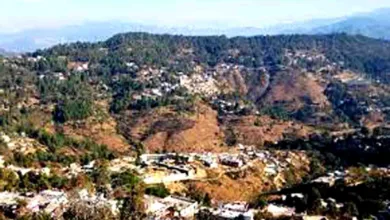Super foods… really?

 Krishan Kalra
Krishan Kalra
As small kids, we had first heard about kesar and kasturi as ‘super foods’ while the Unani hakeems talked about gold foils (werk) that were consumed by the royals. In my own middle class family, when we came back from school in the afternoon, our grandmother gave us some malai on a roti left over from the morning; we were also encouraged to have homemade white butter with parathas and some ghee and jaggery on our rotis in winter. We were told that these helped us grow stronger and agile while also improving our memory. The term ‘super foods’ was yet to be coined.Later, when I started travelling on international flights -being director of a small company we had the luxury of first class- there was no ‘business class’ anyway then- one was introduced to those tasteless sick looking miniature blackish eggs called Caviar. Darned thing was served with champagne with a little bit of grated onion and a slice of hard-boiled egg all on a dainty ceramic plate. I knew that this insipid offering was very expensive so I ate it only to make sure that the passenger in the next seat didn’t think of me as a country hick! In due course one started seeing “English or exotic vegetables” like mushrooms, avocado, micro cabbages called Brussels sprouts, asparagus, celery, lemon grass, leeks, broccoli, bell peppers, cherry tomatoes, iceberg lettuce etc. One thing common in all these novelties was their high prices but you just had to get some and cook whenever there were guests.
It was time now for someone to invent the term ‘super foods’ and sell their produce at outrageous prices – sort of ride the bandwagon of exotica. They came up with all kinds of cheeses, some of these came in nice circular shapes like the good old ‘gurkibheli’, others like discs and giant sausages; most of them covered in a thick coating of colorful wax and to make sure that your cheese platter is decorated nicely what became mandatory were the pickled olives and gherkins and sometimes those little globe like imported grapes. All in all, the purpose was to make your cheese platter superior looking than of your friend’s. Soon quinoa crash landed on the scene and everyone was offering quinoa salads. Adventurous farmers started offering organic vegetables, ostensibly grown without chemicals but there is just no way to differentiate the so called organic vegetables from normal ones in the market except that all these were priced two to four times the normally priced ones. To my mind the only differentiator between the so called super foods is the price that these command. Essentially many savvy marketers use their sales techniques, promotional plans and positioning of their products in a manner that would attracted those who are able to pay the high prices for what is perceived as ‘exclusive’.
I have noticed recently the emergence of good old ata (flour) made from cereals like jowar, bajra, ragi and chana in cartons of 500 grams each costing between Rs 55 to 85. One could laugh at it because these are the same products which were always eaten by people in the villages. Some bright kids floated the idea that these ata are gluten free; soon people wanted to ride on the new bandwagon and that is what led to their prices going sky high. The obsession with super foods is not stopping anywhere; people keep coming up with the same old product with catchy new adlines.For a lark, I checked with our cook whether these are still available in his village and was told yes, though the price in the village has also doubled in two years. So is it exploitation of the gullible or real super foods? There are many other cases where people have been taken for a ride only with imaginative advertising. Take the case of dried fruits. Till some years ago, almonds were the undisputed king and everything else followed in popularity and prices. Then full page newspaper advertisements appeared about walnuts being good for the brain and suddenly almond prices dipped and walnuts started climbing. Same thing had happened earlier with almonds versus cashew when it was propagated that cashews had high levels of cholesterol and pistachio were the best. Makhana are another winner; till recently displayed on the back shelves of grocery shops, today everyone is going gaga about this ‘low calorie, no fat, no sugar super snack’ which sells in nice 100 gram packs at about Rs 160. Even eggs were not spared. With concerted efforts of the government’s egg coordination committee and well-meaning growers, consumption of eggs soared and it became a popular snack for the poor. Hand carts with trays of 30 eggs each stacked high and a kerosene stove with an aluminum vessel to boil eggs became a familiar sight in every colony. For Rs 5 a poor man could buy a boiled egg, served on a piece of old newspaper with a little salt sprinkled on it. Some vendors even offered bread slices so the aam admi could make a meal of it with two eggs and four slices. Now, how could the rich eat the same stuff as the poor man on the street? So we saw emergence of ‘brown eggs’, ‘organic eggs’ and many other sophisticated words and beautiful packaging, sold only at premium stores at up to Rs 25 or 30 per egg!
Noted nutritionist and author RujutaDiwekar mentions in her latest book ‘Indian Super Foods’ that “super foods are foods that, like true love, have stood the test of time”; she goes on to add that “ they grow naturally in the land where you live, are rich in micronutrients and taste, every part of the crop/plant can be used in unique ways, encourage diversity in diet and lead to sustainable lifestyle, help local economy and make sound ecological sense. In the book, she lists Ghee, Kokum, banana, cashew, rice, coconut and jackfruit among her favourite ‘super foods’. So much for the esoteric ones created by media hyperbole and clever marketing!
In conclusion, I feel our lives and vanities are being dictated by savvy marketers. Basic rice, wheat flour, lentils and green leafy vegetables, milk, curds, good old paneer fruits, eggs, chicken and fish provide all necessary nutrition needed by the human body. Throw in some peanuts and seeds and you have enough protein too. All this talk of ‘super foods’ is only a ‘super fad’.
(A veteran of the corporate world, the author now does only voluntary work in various spheres. Views expressed are personal)






